The Photovoltaic Cell Based on CIGS: Principles and Technologies
Abstract
:1. Introduction
2. Photovoltaic Cell Based on CIGS
2.1. The Usual Materials
2.1.1. The Substrate
2.1.2. Molybdenum Rear Contact
2.1.3. The Absorber in CIGS
2.1.4. The Buffer Layer in CdS
2.1.5. The Intrinsic Zinc Oxide/Zinc Oxide Aluminum-Doped Window Layer (iZnO/ZnO: Al)
2.2. CIGS Cell Band Structure
2.3. The Buffer Layer
2.3.1. The Role of the Buffer Layer
2.3.2. The Layer of CdS by Chemical Bath
The Benefits of the CdS
The Disadvantages of the CdS
2.3.3. Alternative Materials to CdS
- A bandgap greater than the bandgap of CdS (2.4 eV) is suitable to maximize photon absorption in CIGS;
- Optimal alignment of the bands of conduction between the absorber and the buffer layer (0 < CBO < 0.4 eV);
- Good agreement with the crystalline structure of the CIGS to minimize interface defects;
- Higher doping of the buffer layer than that of the absorber surface to maintain the Space Charge Zone (SCZ) in the absorber;
- Low electrical resistivity—in the opposite case, the buffer layer will have to be deposited with a small thickness;
- A deposition technique compatible with an online method.
- The non-reactive sputtering of a ternary target
- Co-sputtering of ZnS and ZnO targets
- The reactive sputtering (O) of a ZnS2 target
- The reactive sputtering (H2S) of a ZnO target
2.3.4. The Properties of ZnS and ZnO Films
- High power generates higher crystalline quality.
- A low deposition pressure makes it possible to achieve a larger optical gap. Thus, it is necessary to precisely identify the conditions of deposits compatible with obtaining films having the desired qualities. If pressure and power influence the characteristics of ZnO and ZnS films, the chemical composition modifies their properties in a preponderant way.
2.3.5. Range of Variation Properties of ZnOxS1−x Films
The Chemical Composition of ZnOxS1−x Films
The Crystalline Characteristics of ZnOxS1−x Films
The Optical Properties of ZnOS1−x Films
2.4. Effects of Alkali Metal Halide Postdeposition Treatment
2.5. The Rear Contact
2.5.1. The Role of the Back Contact
2.5.2. The Choice of Molybdenum
2.5.3. The Properties of Molybdenum
- Resistance to the deposition conditions of the upper layers, low electrical resistivity;
- The formation of an ohmic contact at the interface with the absorber, minimizing carrier recombination;
- A strong reflective character.
2.6. Front Contact
2.6.1. The Properties of ZnO
2.6.2. The Doping of ZnO and the Interest of AZO
3. Comparative Study of the Copper Indium Gallium Selenide (CIGS) Solar Cell with Other Solar Technologies
4. Conclusions
Funding
Institutional Review Board Statement
Informed Consent Statement
Data Availability Statement
Acknowledgments
Conflicts of Interest
Abbreviations
| AFM | Atomic Force Microscopy |
| ALD | Atomic Layer Deposition |
| AZO | Aluminum doped Zinc Oxide |
| CBD | Chemical Bath Deposition |
| CIGS | Cu(In, Ga)Se2 |
| DC | Direct Current |
| ZSW | Zentrum für Sonnenenergie- und Wasserstoff-Forschung Baden-Württemberg |
| EDX | Energy dispersive X-Ray Spectrometry |
| EELS | Electron Energy Loss Spectroscopy |
| SEM | Scanning Electron Microscopy |
| TEM | Transmittance Electron Microscopy |
| PET | Polyethylene Terephthalate |
| PVD | Physical Vapor Deposition |
| RC | Cyclical report |
| RF | Radiofrequency |
| SAED | Selected Area Electron Diffraction |
| Sccm | Standard Cubic Centimeter per Minute (cm3/min) |
| SLG | Soda Lime Glass |
| TCO | Transparent Conductive Oxide |
| XPS | X-Ray Photoelectron Spectroscopy |
| XRD | X-Rays Diffraction |
| Zn(O,S) | zinc Oxysulfide |
| ZnO | Zinc-Oxyde |
| ZnO:Al | Aluminum Doped Zinc Oxide |
| ZnS | Zinc Sulfide |
References
- Jackson, P.; Wuerz, R.; Hariskos, D.; Lotter, E.; Witte, W.; Powalla, M. Effects of heavy alkali elements in Cu(In,Ga)Se2 solar cells with efficiencies up to 22.6%. Phys. Status Solidi RRL—Rapid Res. Lett. 2016, 10, 583–586. [Google Scholar] [CrossRef] [Green Version]
- Boyd, R.H. Relaxation processes in crystalline polymers: Experimental behaviour—A review. Polymer 1985, 26, 323–347. [Google Scholar] [CrossRef]
- Kessler, F.; Rudmann, D. Technological aspects of flexible CIGS solar cells and modules. Sol. Energy 2004, 77, 685–695. [Google Scholar] [CrossRef]
- Blosch, P.; Chirilă, A.; Pianezzi, F.; Seyrling, S.; Rossbach, P.; Buecheler, S.; Nishiwaki, S.; Tiwari, A.N. Comparative Study of Different Back-Contact Designs for High-Efficiency CIGS Solar Cells on Stainless Steel Foils. IEEE J. Photovolt. 2011, 1, 194–199. [Google Scholar] [CrossRef]
- Rudmann, D.; Brémaud, D.; da Cunha, A.; Bilger, G.; Strohm, A.; Kaelin, M.; Zogg, H.; Tiwari, A. Sodium incorporation strategies for CIGS growth at different temperatures. Thin Solid Films 2005, 480–481, 55–60. [Google Scholar] [CrossRef]
- Bodegard, M.; Granath, K.; Stolt, L.; Rockett, A. The behaviour of Na implanted into Mo thin films during annealing. Sol. Energy Mater. Sol. Cells 1999, 58, 199–208. [Google Scholar] [CrossRef]
- Yun, J.H.; Kim, K.H.; Kim, M.S.; Ahn, B.T.; Ahn, S.J.; Lee, J.C.; Yoon, K.H. Fabrication of CIGS solar cells with a Na-doped Molayer on a Na-free substrate. Thin Solid Films 2007, 515, 5876–5879. [Google Scholar] [CrossRef]
- Gordillo, G.; Grizalez, M.; Hernandez, L.C. Structural and electrical properties of DC sputtered molyb denum films. Sol. Energy Mater. Sol. Cells 1998, 51, 327–337. [Google Scholar] [CrossRef]
- Wada, T.; Kohara, N.; Nishiwaki, S.; Negami, T. Characterization of the Cu(In, Ga)Se2/Mo interface in CIGS solar cells. Thin Solid Films 2001, 387, 118–122. [Google Scholar] [CrossRef]
- Kodigala, S.R. Cu(In1-xGax)Se2 Based Thin Film Solar Cells; Academic Press: Amsterdam, The Netherlands, 2010. [Google Scholar]
- Pianezzi, F.H. Electronic Transport and Doping Mechanisms in Cu(In,Ga)Se₂ Thin Film Solar Cells. Ph.D. Thesis, ETH Zurich, Zürich, Switzerland, 2014. [Google Scholar] [CrossRef]
- Choi, I.-H.; Choi, C.-H. Improvement of the energy conversion efficiency of Cu(In,Ga)Se2 solar cells using an additional Zn(S,O) buffer. Thin Solid Films 2012, 525, 132–136. [Google Scholar] [CrossRef]
- Takashi, M.; Takuya, M.; Hideyuki, T.; Yoshihiro, H.; Takayuki, N.; Yasuhiro, H.; Akeshi, U.; Masatoshi, K. Theoretical analysis of the effect of conduction band offset of window/CIS layers on performance of CIS solar cells using device simulation. Sol. Energy Mater. Sol. Cells 2001, 67, 83–88. [Google Scholar]
- Nie, M.; Ellmer, K. Morphology and structure evolution of Cu(In,Ga)S2 films deposited by reactive magnetron co-sputtering with electron cyclotron resonance plasma assistance. J. Appl. Phys. 2014, 115, 084902. [Google Scholar] [CrossRef]
- Bhattacharya, R.N. Solution Growth and Electrodeposited CuInSe2Thin Films. J. Electrochem. Soc. 1983, 130, 2040–2042. [Google Scholar] [CrossRef]
- Contreras, M.A.; Romero, M.J.; To, B.; Hasoon, F.; Noufi, R.; Ward, S.; Ramanathan, K. Optimization of CBD CdS process in high-efficiency Cu(In,Ga)Se2- based solar cells. Thin Solid Films 2002, 403–404, 204–211. [Google Scholar] [CrossRef]
- Ramanathan, K.; Mann, J.; Glynn, S.; Christensen, S.; Pankow, J.; Li, J.; Scharf, J.; Mansfield, L.; Contreras, M.; Noufi, R. A comparative study of Zn (O, S) buffer layers and CIGS solar cells fabricated by CBD, ALD, and sputtering in Photovoltaic Specialists Conference (PVSC). In Proceedings of the 38th IEEE, Austin, TX, USA, 3–8 June 2012; pp. 001677–001681. [Google Scholar]
- Buecheler, S.; Corica, D.; Guettler, D.; Chirila, A.; Verma, R.; Müller, U.; Niesen, T.; Palm, J.; Tiwari, A. Ultrasonically sprayed indium sulfide buffer layers for Cu(In,Ga)(S,Se)2 thin-film solar cells. Thin Solid Films 2009, 517, 2312–2315. [Google Scholar] [CrossRef]
- Rau, U.; Schmidt, M. Electronic properties of ZnO/CdS/Cu(In,Ga)Se2 solar cells—Aspects of heterojunction formation. Thin Solid Films 2001, 387, 141–146. [Google Scholar] [CrossRef]
- Chirilă, A.; Buecheler, S.; Pianezzi, F.; Bloesch, P.; Gretener, C.; Uhl, A.R.; Sutter-Fella, C.; Kranz, L.; Perrenoud, J.; Seyrling, S.; et al. Highly efficient Cu(In,Ga)Se2 solar cells grown on flexible polymer films. Nat. Mater. 2011, 10, 857–861. [Google Scholar] [CrossRef]
- Naghavi, N.; Abou-Ras, D.; Allsop, N.; Barreau, N.; Bücheler, S.; Ennaoui, A.; Fischer, C.-H.; Guillen, C.; Hariskos, D.; Herrero, J.; et al. Buffer layers and transparent conducting oxides for chalcopyrite Cu(In,Ga)(S,Se)2 based thin film photovoltaics: Present status and current developments. Prog. Photovolt. Res. Appl. 2010, 18, 411–433. [Google Scholar] [CrossRef]
- Furlong, M.J.; Froment, M.; Bernard, M.; Cortès, R.; Tiwari, A.; Krejci, M.; Zogg, H.; Lincot, D. Aqueous solution epitaxy of CdS layers on CuInSe2. J. Cryst. Growth 1998, 193, 114–122. [Google Scholar] [CrossRef]
- Abou-Ras, D.; Kostorz, G.; Romeo, A.; Rudmann, D.; Tiwari, A.N. Structural and chemical investigations of CBD- and PVD-CdS buffer layers and interfaces in Cu(In,Ga)Se2-based thin film solar cells. Thin Solid Films 2005, 480–481, 118–123. [Google Scholar] [CrossRef]
- Kessler, J.; Ruckh, M.; Hariskos, D.; Ruhle, U.; Menner, R.; Schock, H.W. Interface engineering between CuInSe2 and ZnO. In Proceedings of the Conference Record of the Twenty Third IEEE Photovoltaic Specialists Conference—1993 (Cat. No.93CH3283-9), Louisville, KY, USA, 10–14 May 1993; pp. 447–452. [Google Scholar]
- Nakada, T.; Kunioka, A. Direct evidence of Cd diffusion into Cu(In,Ga)Se2 thin films during chemical-bath deposition process of CdS films. Appl. Phys. Lett. 1999, 74, 2444–2446. [Google Scholar] [CrossRef]
- Bachari, E.M.; Baud, G.; Amor, S.B.; Jacquet, M. Structural and optical properties of sputtered ZnO films. Thin Solid Films 1999, 348, 165–172. [Google Scholar] [CrossRef]
- Cadmium and Inorganic Compounds (FT 60)—Toxicological File—INRS. Available online: http://www.inrs.fr/publications/bdd/fichetox/fiche.html?refINRS=FICHETOX_60 (accessed on 15 January 2022).
- Ben Nasr, T.; Kamoun, N.; Kanzari, M.; Bennaceur, R. Effect of pH on the properties of ZnS thin films grown by chemical bath deposition. Thin Solid Films 2006, 500, 4–8. [Google Scholar] [CrossRef]
- Kato, T. Cu(In,Ga)(Se,S) solar cell research in Solar Frontier: Progress and current status. Jpn. J. Appl. Phys. 2017, 56, 04CA02. [Google Scholar] [CrossRef]
- Kobayashi, T.; Kao, Z.J.L.; Nakada, T. Temperature dependent current–voltage and admittance spectroscopy on heat-light soaking effects of Cu(In,Ga)Se2 solar cells with ALD- Zn(O,S) and CBD-ZnS(O,OH) buffer layers. Sol. Energy Mater. Sol. Cells 2015, 143, 159–167. [Google Scholar] [CrossRef]
- Nakamura, M.; Kouji, Y.; Chiba, Y.; Hakuma, H.; Kobayashi, T.; Nakada, T. Achievement of 19.7% efficiency with a small-sized Cu(InGa)(SeS)2 solar cells prepared by sulfurization after selenizaion process with Zn-based buffer. In Proceedings of the 2013 IEEE 39th Photovoltaic Specialists Conference (PVSC), Tampa, FL, USA, 16–21 June 2013; pp. 0849–0852. [Google Scholar]
- Grimm, A.; Kieven, D.; Klenk, R.; Lauermann, I.; Neisser, A.; Niesen, T.; Palm, J. Junction formation in chalcopyrite solar cells by sputtered wide gap compound semiconductors. Thin Solid Films 2011, 520, 1330–1333. [Google Scholar] [CrossRef]
- Grimm, A.; Just, J.; Kieven, D.; Lauermann, I.; Palm, J.; Neisser, A.; Rissom, T.; Klenk, R. Sputtered Zn(O,S) for junction formation in chalcopyrite-based thin film solar cells. Phys. Status Solidi RRL—Rapid Res. Lett. 2010, 4, 109–111. [Google Scholar] [CrossRef]
- Zhang, L.; Huang, J.; Yang, H.M.; Tang, K.; Lin, M.A.; Ren, B.; Zhang, K.X.; Wang, L.J. Properties of ZnS Films Deposited by Radio Frequency Magnetron Sputtering. Key Eng. Mater. 2014, 602–603, 966–969. [Google Scholar] [CrossRef]
- Baldissera, G.; Persson, C. Understanding the optical properties of ZnO1−xSx and ZnO1−xSex alloys. J. Appl. Phys. 2016, 119, 045704. [Google Scholar] [CrossRef] [Green Version]
- Kim, J.; Park, C.; Pawar, S.; Inamdar, A.I.; Jo, Y.; Han, J.; Hong, J.; Park, Y.S.; Kim, D.-Y.; Jung, W.; et al. Optimization of sputtered ZnS buffer for Cu2ZnSnS4 thin film solar cells. Thin Solid Films 2014, 566, 88–92. [Google Scholar] [CrossRef]
- Wood, R.M. Méthodes Physiques D’étude des Minéraux et des Matériaux Solides: Diffraction des Rayons X, des Électrons, des Neutrons, Microscopie Électronique á Transmission, á Balayage, Spectrométrie des Rayons X, des Électrons, des Ions. Phys. Bull. 1977, 28, 80–81. [Google Scholar] [CrossRef]
- Choi, J.H.; Garay, A.A.; Hwang, S.M.; Chung, C.W. Influence of oxygen on characteristics of Zn(O,S) thin films deposited by RF magnetron sputtering. J. Vac. Sci. Technol. A 2015, 33, 040603. [Google Scholar] [CrossRef]
- Choi, J.H.; Jung, S.H.; Chung, C.W. Characterization of Zn(O,S) Buffer Layers for Cu(In,Ga)Se2 Solar Cells. J. Nanosci. Nanotechnol. 2016, 16, 5378–5383. [Google Scholar] [CrossRef] [PubMed]
- Meyer, B.K.; Polity, A.; Farangis, B.; He, Y.; Hasselkamp, D.; Krämer, T.; Wang, C.; Haboeck, U.; Hoffmann, A. On the composition dependence of ZnO1−xSx. Phys. Status Solidi C 2004, 1, 694–697. [Google Scholar] [CrossRef]
- Meyer, B.K.; Polity, A.; Farangis, B.; He, Y.; Hasselkamp, D.; Krämer, T.; Wang, C. Structural properties and bandgap bowing of ZnO1−xSx thin films o deposited by reactive sputtering. Appl. Phys. Lett. 2004, 85, 4929–4931. [Google Scholar] [CrossRef]
- Buffière, M.; Harel, S.; Guillot-Deudon, C.; Arzel, L.; Barreau, N.; Kessler, J. Effect of the chemical composition of co-sputtered Zn(O,S) buffer layers on Cu(In,Ga)Se 2 solar cell performance: Chemical composition of co-sputtered Zn(O,S) buffer layers. Phys. Status Solidi A 2015, 212, 282–290. [Google Scholar]
- Vegard, V.L. Law of Vegard. Z. Phys. 1921, 5, 17. [Google Scholar] [CrossRef]
- Minemoto, T.; Okamoto, A.; Takakura, H. Sputtered ZnO-based buffer layer for band offset o control in Cu(In,Ga)Se2 solar cells. Thin Solid Films 2011, 519, 7568–7571. [Google Scholar] [CrossRef]
- Moons, E.; Engelhard, T.; Cahen, D. Ohmic contacts to p-CuInSe2 crystals. J. Electron. Mater. 1993, 22, 275–280. [Google Scholar] [CrossRef]
- Orgassa, K.; Schock, H.W.; Werner, J.H. Alternative back contact materials for thin film Cu(In,Ga)Se2 solar cells. Thin Solid Films 2003, 431–432, 387–391. [Google Scholar] [CrossRef]
- Shahidi, A.V.; Shih, I.; Araki, T.; Champness, C.H. Structural and electronic properties of o CuInSe2. J. Electron. Mater. 1985, 14, 297–310. [Google Scholar] [CrossRef]
- Nakada, T.; Hirabayashi, Y.; Tokado, T.; Ohmori, D.; Mise, T. Novel device structure for Cu(In,Ga)Se2 thin film solar cells using transparent conducting oxide back and front contacts. Sol. Energy 2004, 77, 739–747. [Google Scholar] [CrossRef]
- Aviles, T. Study of Sputtering Deposition of Materials for the Production of Thin-Film Photovoltaic Cells Based on CIGS or CZTS. Technologies, Acoustics and Telecommunications. Ph.D. Thesis, University of Lille, Lille, France, 11 December 2012. [Google Scholar]
- Abou-Ras, D.; Kostorz, G.; Bremaud, D.; Kälin, M.; Kurdesau, F.V.; Tiwari, A.N.; Döbeli, M. Formation and characterization of MoSe2 for Cu(In,Ga)Se2 based solar cells. Thin Solid Films 2005, 480–481, 433–438. [Google Scholar] [CrossRef]
- Duchatelet, A.; Savidand, G.; Vannier, R.N.; Lincot, D. Optimization of MoSe2 formation for Cu(In,Ga)Se2-based solar cells by using thin superficial molybdenum oxide barrier layers. Thin Solid Films 2013, 545, 94–99. [Google Scholar] [CrossRef]
- Pethe, S.A.; Takahashi, E.; Kaul, A.; Dhere, N.G. Effect of sputtering process parameters on film properties of molybdenum back contact. Sol. Energy Mater. Sol. Cells 2012, 100, 1–5. [Google Scholar] [CrossRef]
- Jubault, M.; Ribeaucourt, L.; Chassaing, E.; Renou, G.; Lincot, D.; Donsanti, F. Optimization of molybdenum thin films for electrodeposited CIGS solar cells. Sol. Energy Mater. Sol. Cells 2011, 95, S26–S31. [Google Scholar] [CrossRef]
- Wu, H.-M.; Liang, S.-C.; Lin, Y.-L.; Ni, C.-Y.; Bor, H.-Y.; Tsai, D.-C.; Shieu, F.-S. Structure and electrical properties of Mo back contact for Cu(In, Ga)Se2 o solar cells. Vacuum 2012, 86, 1916–1919. [Google Scholar] [CrossRef]
- Scofield, J.H. Sputtered molybdenum bilayer back contact for copper indium diselenide-based polycrystalline thin-film solar cells.pdf. Thin Solid Films 1995, 260, 26–31. [Google Scholar] [CrossRef]
- Hedström, J.; Ohlsén, H.; Bodegård, M.; Kylner, A.; Stolt, L.; Hariskos, D.; Ruckh, M.; Schock, H.-W. ZnO/CdS/Cu(In,Ga)Se2 thin film solar cells with improved performance. In Proceedings of the Conference Record of the 23rd IEEE Photovoltaic Specialists Conference, Louisville, KY, USA, 10–14 May 1993; pp. 364–371. [Google Scholar]
- Contreras, M.A.; Egaas, B.; Dippo, P.; Webb, J.; Granata, J.; Ramanathan, K.; Asher, S.; Swartzlander, A.; Noufi, R. On The Role of Na and Modifications to Cu(In,Ga)Se, Absorber Materials UsingThin-MF (M=Na, K, Cs) Precursor Layers. In Proceedings of the Conference Record of the 26th IEEE Photovoltaic Specialists Conference, Anaheim, CA, USA, 29 September–3 October 1997; pp. 359–362. [Google Scholar]
- Caballero, R.; Kaufmann, C.A.; Eisenbarth, T.; Grimm, A.; Lauermann, I.; Unold, T.; Klenk, R.; Schock, H.W. Influence of Na on Cu(In,Ga)Se2 solar cells grown on polyimide substrates at low temperature: Impact on the Cu(In,Ga)Se2/Mo interface. Appl. Phys. Lett. 2010, 96, 092104. [Google Scholar] [CrossRef]
- Zhang, X.; Kobayashi, M.; Yamada, A. Comparison of Ag(In,Ga)Se2/Mo and Cu(In,Ga)Se2/Mo Interfaces in Solar Cells. ACS Appl. Mater. Interfaces 2017, 9, 16215–16220. [Google Scholar] [CrossRef]
- Ishizuka, S.; Yamada, A.; Matsubara, K.; Fons, P.; Sakurai, K.; Niki, S. Alkali incorporation control in Cu(In,Ga)Se2 thin films using silicate thin layers and applications in enhancing flexible solar cell efficiency. Appl. Phys. Lett. 2008, 93, 124105. [Google Scholar] [CrossRef]
- Ishizuka, S.; Yamada, A.; Islam, M.M.; Shibata, H.; Fons, P.; Sakurai, T.; Akimoto, K.; Niki, S. Na-induced variations in the structural, optical, and electrical properties of Cu(In,Ga)Se2 thin films. J. Appl. Phys. 2009, 106, 034908. [Google Scholar] [CrossRef] [Green Version]
- Rudmann, D.; da Cunha, A.F.; Kaelin, M.; Kurdesau, F.; Zogg, H.; Tiwari, A.N.; Bilger, G. Efficiency enhancement of solar cells due to post-deposition Na incorporation. Appl. Phys. Lett. 2004, 84, 1129. [Google Scholar] [CrossRef]
- Nakamura, M.; Yamaguchi, K.; Kimoto, Y.; Yasaki, Y.; Kato, T.; Sugimoto, H. Cd-Free Cu(In,Ga)(Se,S)2 Thin-Film Solar Cell With Record Efficiency of 23.35%. IEEE J. Photovolt. 2019, 9, 1863. [Google Scholar] [CrossRef]
- Chirilá, A.; Reinhard, P.; Pianezzi, F.; Bloesch, P.; Uhl, A.R.; Fella, C.; Kranz, L.; Keller, D.; Gretener, C.; Hagendorfer, H.; et al. Potassium-induced surface modification of Cu (In, Ga) Se2 thin films for high-efficiency solar cells. Nat. Mater. 2013, 12, 1107. [Google Scholar] [CrossRef] [PubMed]
- Pinanezzi, F.; Reinhard, P.; Chirilá, A.; Bissig, B.; Nishiwaki, S.; Buecheler, S.; Tiwari, A.N. Unveiling the effects of post-deposition treatment with different alkaline elements on the electronic properties of CIGS thin film solar cells. Phys. Chem. Chem. Phys. 2014, 16, 8843. [Google Scholar] [CrossRef]
- Li, Z.-H.; Cho, E.-S.; Kwon, S.J. Molybdenum thin film deposited by in-line DC magnetron sputtering as a back contact for Cu(In,Ga)Se2 solar cells. Appl. Surf. Sci. 2011, 257, 9682–9688. [Google Scholar] [CrossRef]
- Reinhard, P.; Bissig, B.; Pianezzi, F.; Avancini, E.; Hagendorfer, H.; Keller, D.; Fuchs, P.; Döbeli, M.; Vigo, C.; Crivelli, P.; et al. Features of KF and NaF Postdeposition Treatments of Cu(In,Ga)Se2 Absorbers for High Efficiency Thin Film Solar Cells. Chem. Mater. 2015, 27, 5755. [Google Scholar] [CrossRef]
- Malitckaya, M.; Komsa, H.-P.; Havu, V.; Puska, M.J. Effect of Alkali Metal Atom Doping on the CuInSe2-Based Solar Cell Absorber. J. Phys. Chem. C 2017, 121, 15516. [Google Scholar] [CrossRef] [Green Version]
- Ishizuka, S.; Taguchi, N.; Nishinaga, J.; Kamikawa, Y.; Tanaka, S.; Shibata, H. Group III Elemental Composition Dependence of RbF Postdeposition Treatment Effects on Cu(In,Ga)Se2 Thin Films and Solar Cells. J. Phys. Chem. C 2018, 122, 3809. [Google Scholar] [CrossRef]
- Taguchi, N.; Tanaka, S.; Ishizuka, S. Direct insights into RbInSe2 formation at Cu(In,Ga)Se2 thin film surface with RbF postdeposition treatment. Appl. Phys. Lett. 2018, 113, 113903. [Google Scholar] [CrossRef]
- Lepetit, T.; Harel, S.; Arzel, L.; Ouvrard, G.; Barreau, N. KF post deposition treatment in co-evaporated Cu(In,Ga)Se2 thin film solar cells: Beneficial or detrimental effect induced by the absorber characteristics. Prog. Photovolt. 2017, 25, 1068. [Google Scholar] [CrossRef]
- Kodalle, T.; Bertram, T.; Schlatmann, R.; Kaufmann, C.A. Effectiveness of an RbF post deposition treatment of CIGS solar cells in dependence on the Cu content of the absorber layer. IEEE J. Photovolt. 2019, 9, 1839. [Google Scholar] [CrossRef]
- Kelly, P.J.; Zhou, Y.; Postill, A. A novel technique for the deposition of aluminium-doped zinc oxide films. Thin Solid Films 2003, 426, 111–116. [Google Scholar] [CrossRef]
- Zahedi-Azad, S.; Maiberg, M.; Clausing, R.; Scheer, R. Influence of heavy alkali post deposition treatment on wide gap Cu (In, Ga) Se2. Thin Solid Films 2019, 669, 629. [Google Scholar] [CrossRef]
- Shogo, I.; Jiro, N.; Kosuke, B.; Tsuyoshi, M.; Fuuka, A.; Takahiro, W.; Akira, Y.; Jakapan, C.; Takahito, N.; Takashi, M.; et al. Physical and chemical aspects at the interface and in the bulk of CuInSe2-based thin-film photovoltaics. Phys. Chem. Chem. Phys. 2022, 24, 1262–1285. [Google Scholar]
- Namnuan, B.; Amornkitbamrung, V.; Chatraphorn, S. Effects of Cu(In, Ga)3Se5 defect phase layer in Cu(In, Ga)Se2 thin film solar cells. J. Alloys Compd. 2019, 800, 305. [Google Scholar] [CrossRef]
- Ji, S.; Hayakawa, T.; Suyama, N.; Nakamura, K.; Yamada, A. Enhancement of Cu(In, Ga)Se2 solar cells efficiency by controlling the formation of Cu-deficient layer. Jpn. J. Appl. Phys. 2020, 59, 041003. [Google Scholar] [CrossRef]
- Sokolov, P.S.; Baranov, A.N.; Dobrokhotov, Z.V.; Solozhenko, V.L. Synthesis and thermal stability of cubic ZnO in the salt nanocomposites. Russ. Chem. Bull. 2010, 59, 325–328. [Google Scholar] [CrossRef] [Green Version]
- Morkoç, H.; Özgür, Ü. Zinc Oxide: Fundamentals Materials and Device Technology; Wiley: Hoboken, NJ, USA, 2009. [Google Scholar]
- Bronzoni, M.; Colace, L.; de Iacovo, A.; Laudani, A.; Lozito, G.M.; Lucaferri, V.; Radicioni, M.; Rampino, S. Equivalent circuit model for Cu(In,Ga)Se2 solar cells operating at differ-ent temperatures and irradiance. Electronics 2018, 7, 324. [Google Scholar] [CrossRef] [Green Version]
- Durão, B.; N Torres, J.P.; F Fernandes, C.A.; Marques Lameirinhas, R.A. Socio-economic Study to Improve the Electrical Sustainability of the North Tower of Instituto Superior Técnico. Sustainability 2020, 12, 1923. [Google Scholar] [CrossRef] [Green Version]
- Melo, I.; Torres, J.P.N.; Fernandes, C.A.F.; Lameirinhas, R.A.M. Sustainability economic study of the islands of the Azores archipelago using photovoltaic panels, wind energy and storage system. Renewables 2020, 7, 4. [Google Scholar] [CrossRef]
- Luceño-Sánchez, J.A.A.; Díez-Pascual, M.; Peña Capilla, R. Materials for photovoltaics: State of art and recent developments. Int. J. Mol. Sci. 2019, 20, 976. [Google Scholar] [CrossRef] [PubMed] [Green Version]
- NREL. Best Research-Cell Efficiencies. 2021. Available online: https://www.nrel.gov/pv/cell-efficiency.html (accessed on 15 January 2022).
- NREL. Champion Module Efficiencies. 2021. Available online: https://www.nrel.gov/pv/assets/pdfs/champion-module-efficiencies.20200708.pdf (accessed on 15 January 2022).
- National Renewable Energy Laboratory (NREL). Golden, CO, January 2021. Available online: https://www.nrel.gov/pv/assets/pdfs/best-research-cell-efficiencies.20201228.pdf (accessed on 15 January 2022).
- Banavoth, M. Perovskite Solar Cells: Properties, Application and Efficiency; Nova Science Publishers: Hauppauge, NY, USA, 2019. [Google Scholar]
- Roy, A.; Ghosh, A.; Bhandari, S.; Sundaram, S.; Mallick, T.K. Perovskite solar cells for BIPV application: A review. Buildings 2020, 10, 129. [Google Scholar] [CrossRef]
- Todorov, T.; Gershon, T.; Gunawan, O.; Lee, Y.S.; Sturdevant, C.; Chang, L.-Y.; Guha, S. Monolithic perovskite-CIGS tandem solar cells via in situ band gap engineering. Adv. Energy Mater. 2015, 5, 23. [Google Scholar] [CrossRef]
- Park, J.; Park, J.H.; Ji, S.; Park, M.; Jang, J.; Kim, J. A three-terminal monolithic perovskite/Si tandem solar cell characterization platform. Joule 2019, 3, 807–818. [Google Scholar] [CrossRef] [Green Version]
- Hossain, M.I.; Qarony, W.; Ma, S.; Zeng, L.; Knipp, D.; Tsang, Y.H. Perovskite/silicon tandem solar cells: From detailed balance limit calculations to photon management. Nano-Micro Lett. 2019, 11, 58. [Google Scholar] [CrossRef] [Green Version]
- Shen, H.; Walter, D.; Wu, Y.; Fong, K.C.; Jacobs, D.A.; Duong, T.; Peng, J.; Weber, K.; White, T.P.; Catchpole, K.R. Monolithic perovskite/Si tandem solar cells: Pathways to over 30% efficiency. Adv. Energy Mater. 2020, 10, 3. [Google Scholar] [CrossRef]
- Fu, F.; Feurer, T.; Jäger, T.; Avancini, E.; Bissig, B.; Yoon, S.; Buecheler, S.; Tiwari, A.N. Low-temperature-processed efficient semi-transparent planar perovskite solar cells for bifacial and tandem applications. Nat. Commun. 2015, 6, 8932. [Google Scholar] [CrossRef]
- Hou, Y.; Aydin, E.; De Bastiani, M.; Xiao, C.; Isikgor, F.H.; Xue, D.J.; Chen, B.; Chen, H.; Bahrami, B.; Chowdhury, A.H.; et al. Efficient tandem solar cells with solution-processed perovskite on textured crystalline silicon. Science 2020, 367, 1135–1140. [Google Scholar] [CrossRef]
- Sun, J.; Yang, X.; Zhao, L.; Dong, B.; Wang, S. Ag-decorated TiO2 nanofibers for highly efficient dye sensitized solar cell. Mater. Lett. 2020, 260, 126882. [Google Scholar] [CrossRef]
- Wang, Y.; Zhao, H.; Mei, Y.; Liu, H.; Wang, S.; Li, X. Carbon nanotube bridging method for hole transport layer-free paintable carbon-based perovskite solar cells. ACS Appl. Mater. Interfaces 2018, 11, 916–923. [Google Scholar] [CrossRef]
- Sun, H.; Deng, J.; Qiu, L.; Fang, X.; Peng, H. Recent progress in solar cells based on one-dimensional nanomaterials. Energy Environ. Sci. 2015, 8, 1139–1159. [Google Scholar] [CrossRef]
- Lee, S.; Jang, J.; Park, T.; Park, Y.M.; Park, J.S.; Kim, Y.K.; Lee, H.K.; Jeon, E.C.; Lee, D.K.; Ahn, B.; et al. Electrodeposited silver. nanowire transparent conducting electrodes for thin-film solar cells. ACS Appl. Mater. Interfaces 2020, 12, 6169–6175. [Google Scholar] [CrossRef] [PubMed]
- Huang, P.S.; Gao, T. Current development of 1D and 2D metallic nanomaterials for the application of transparent conductors in solar cells: Fabrication and modelling. Nano-Struct. Nano-Objects 2018, 15, 119–139. [Google Scholar] [CrossRef]

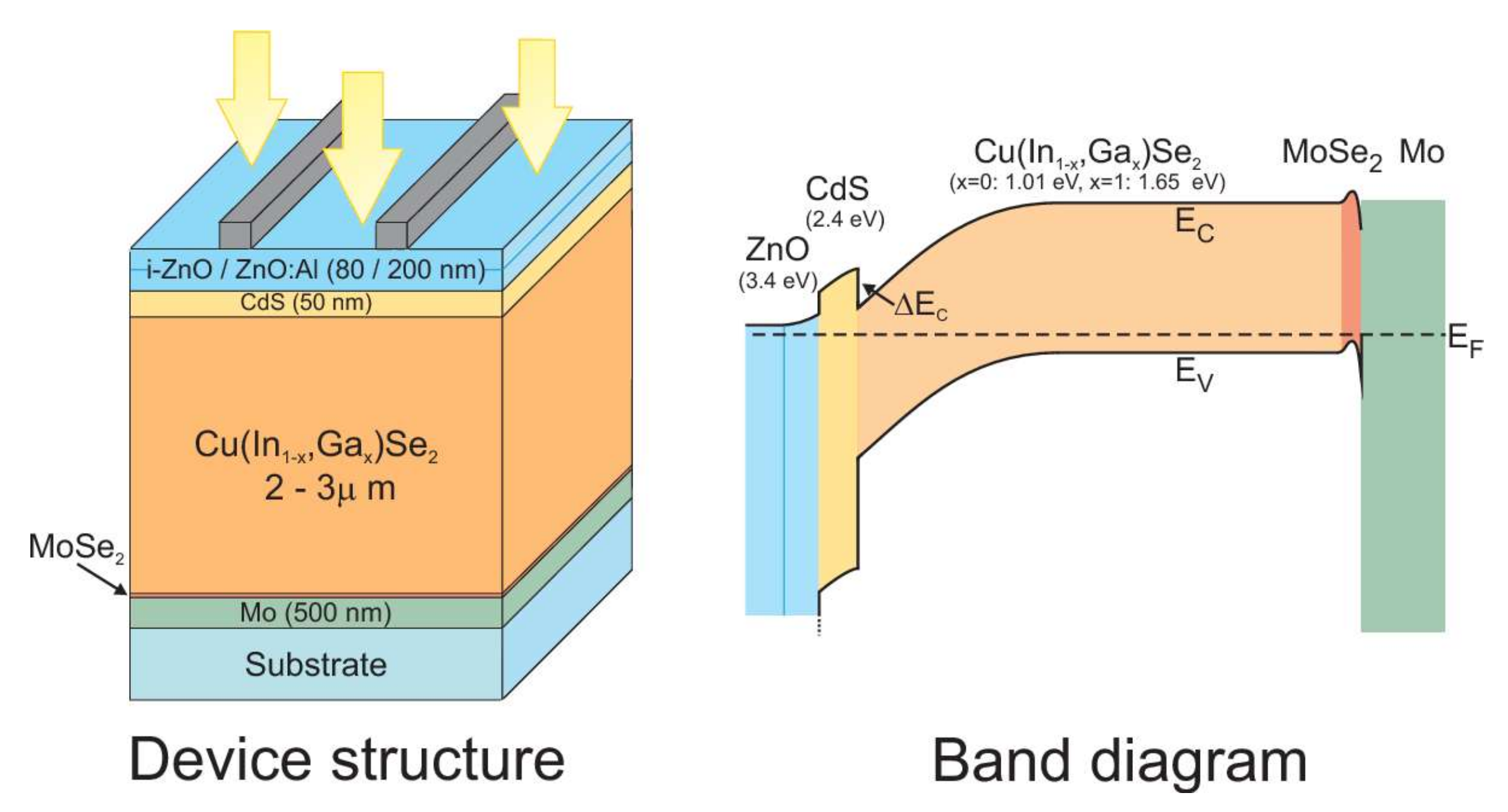
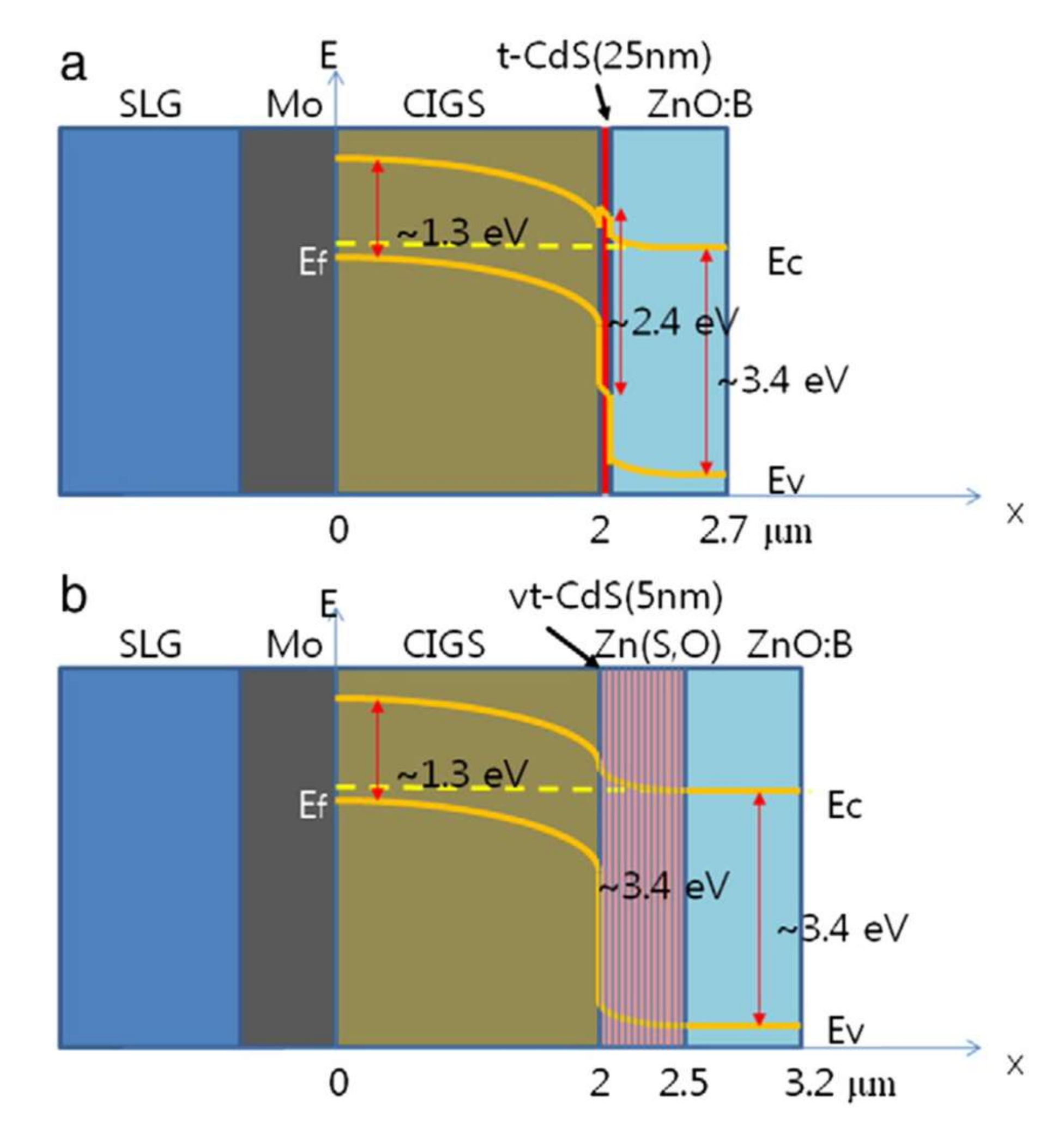

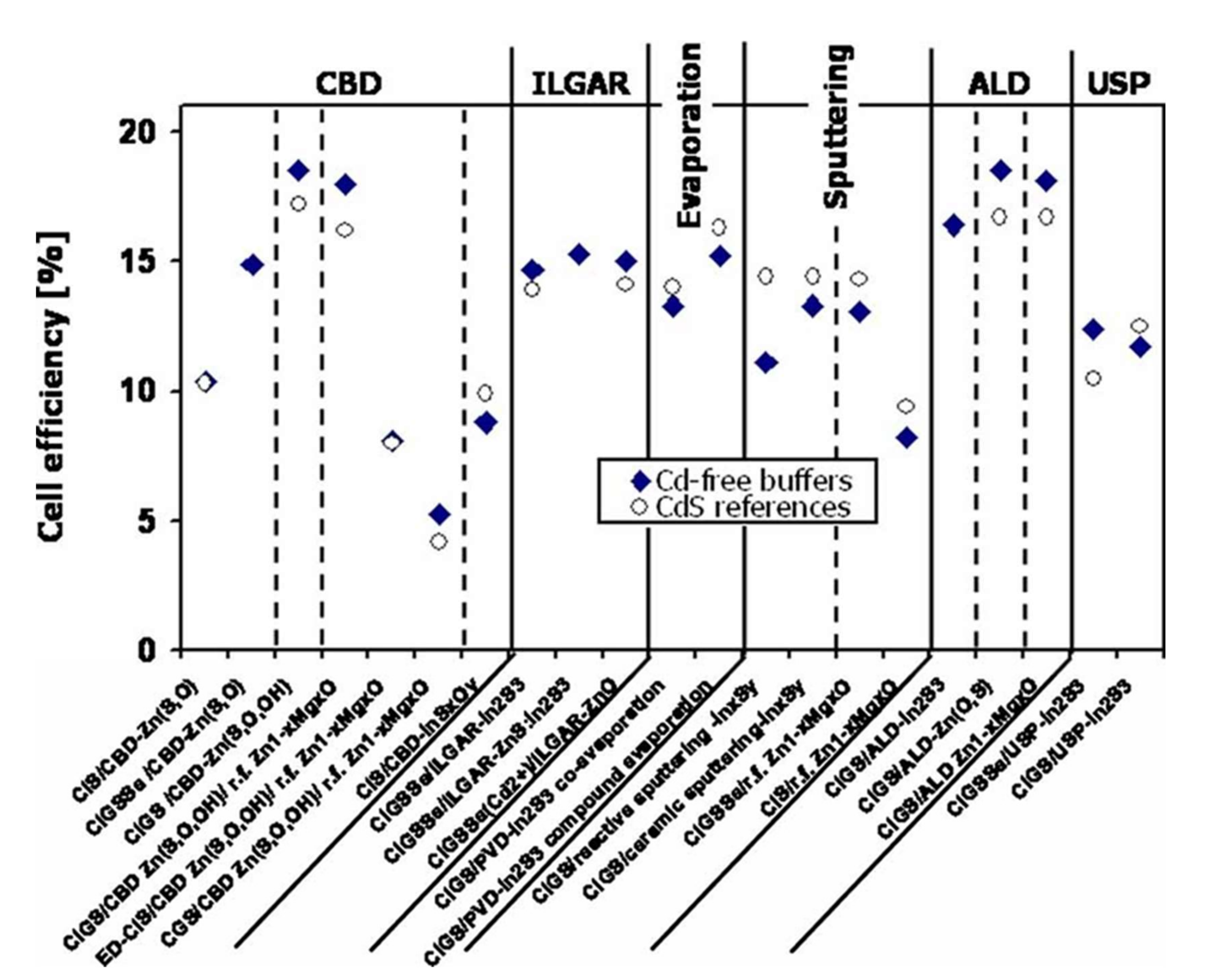
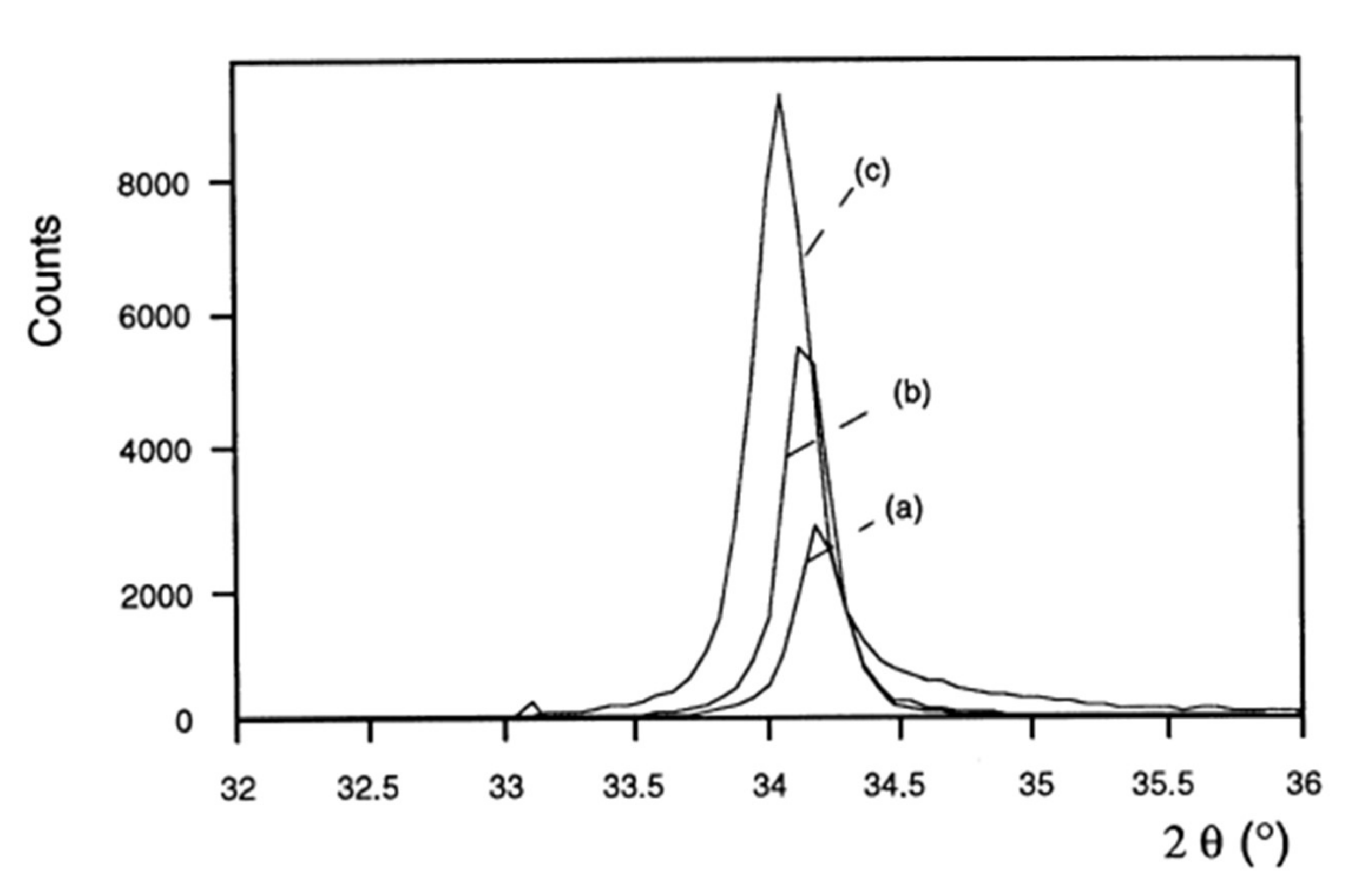
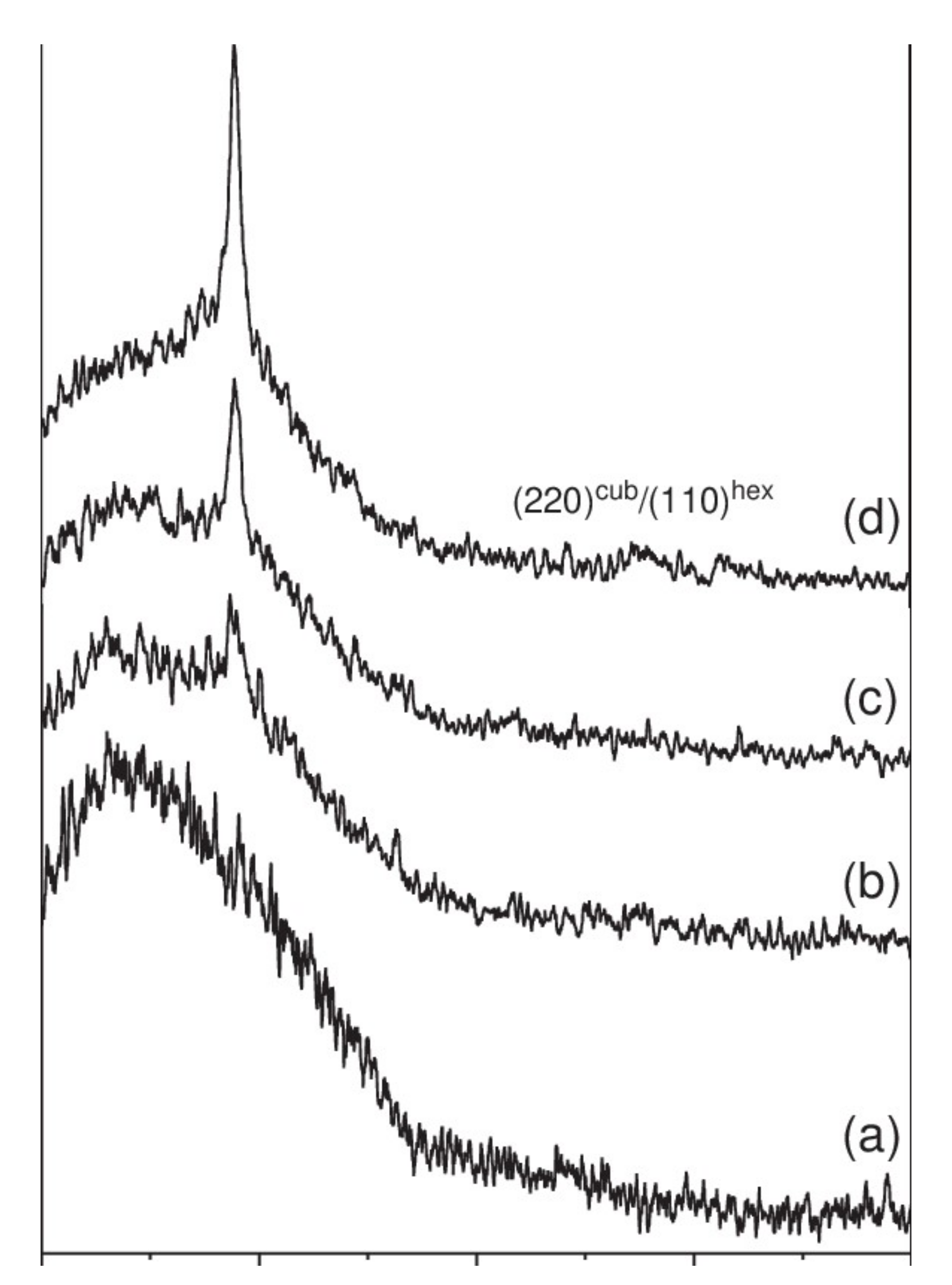
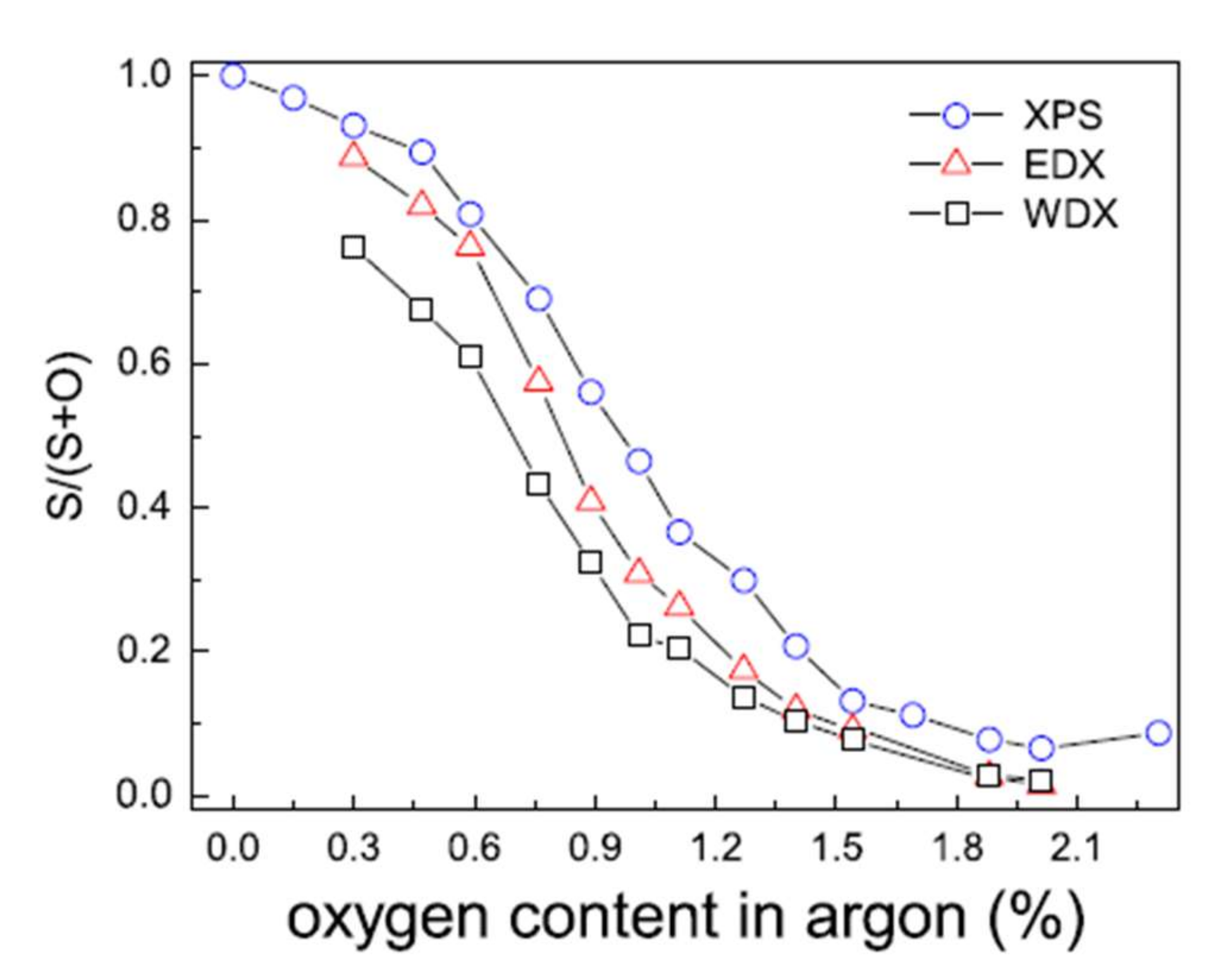
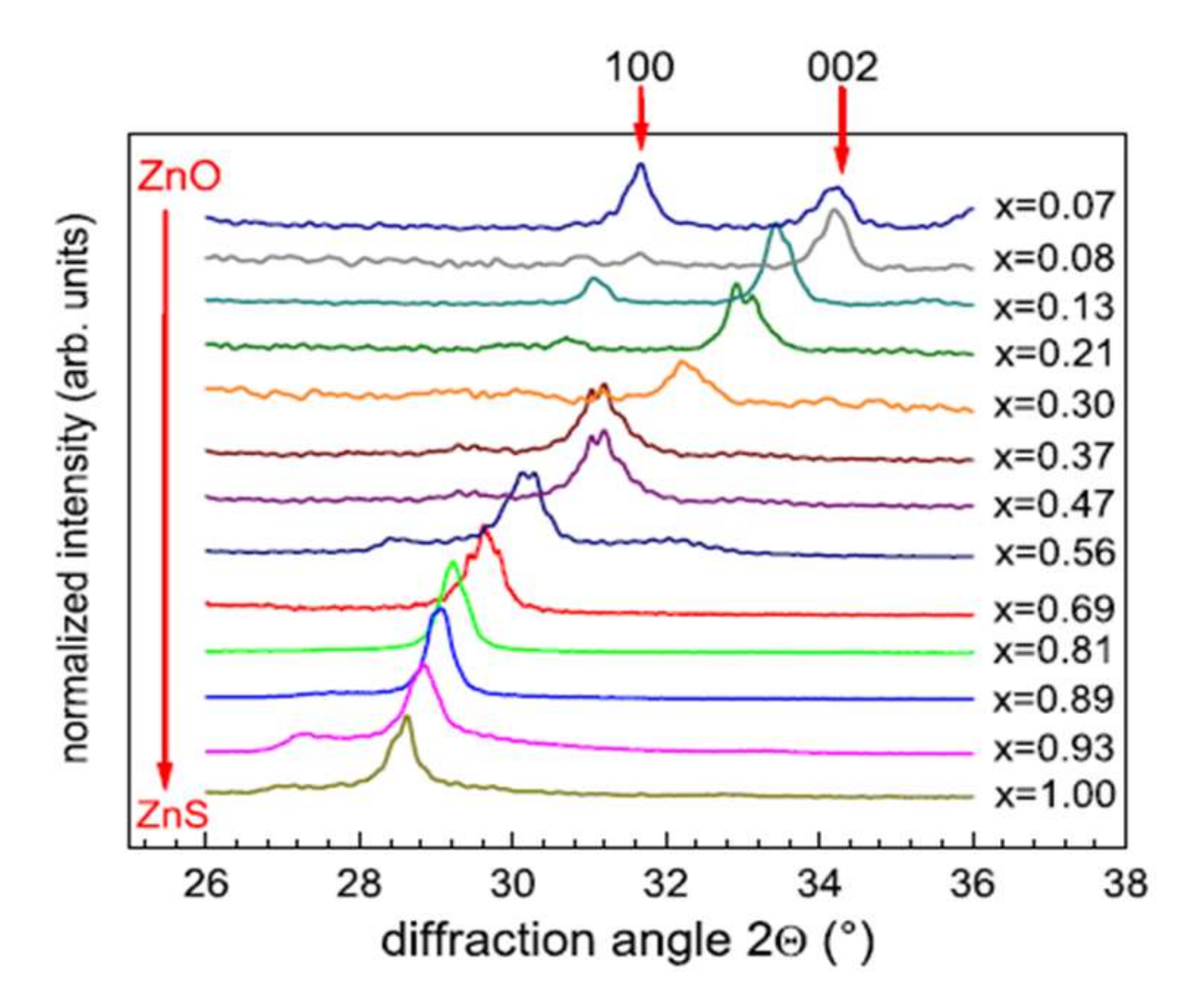
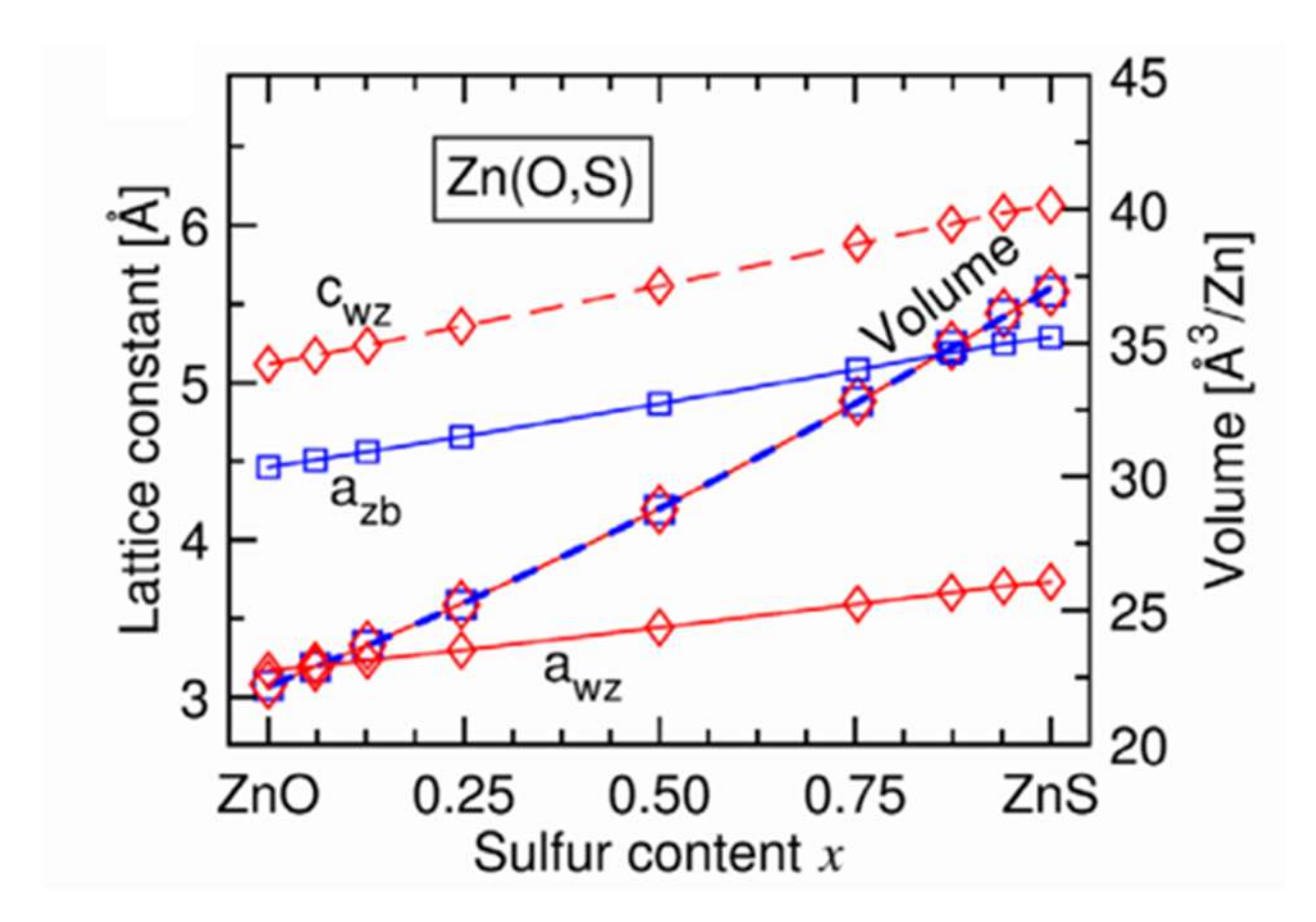
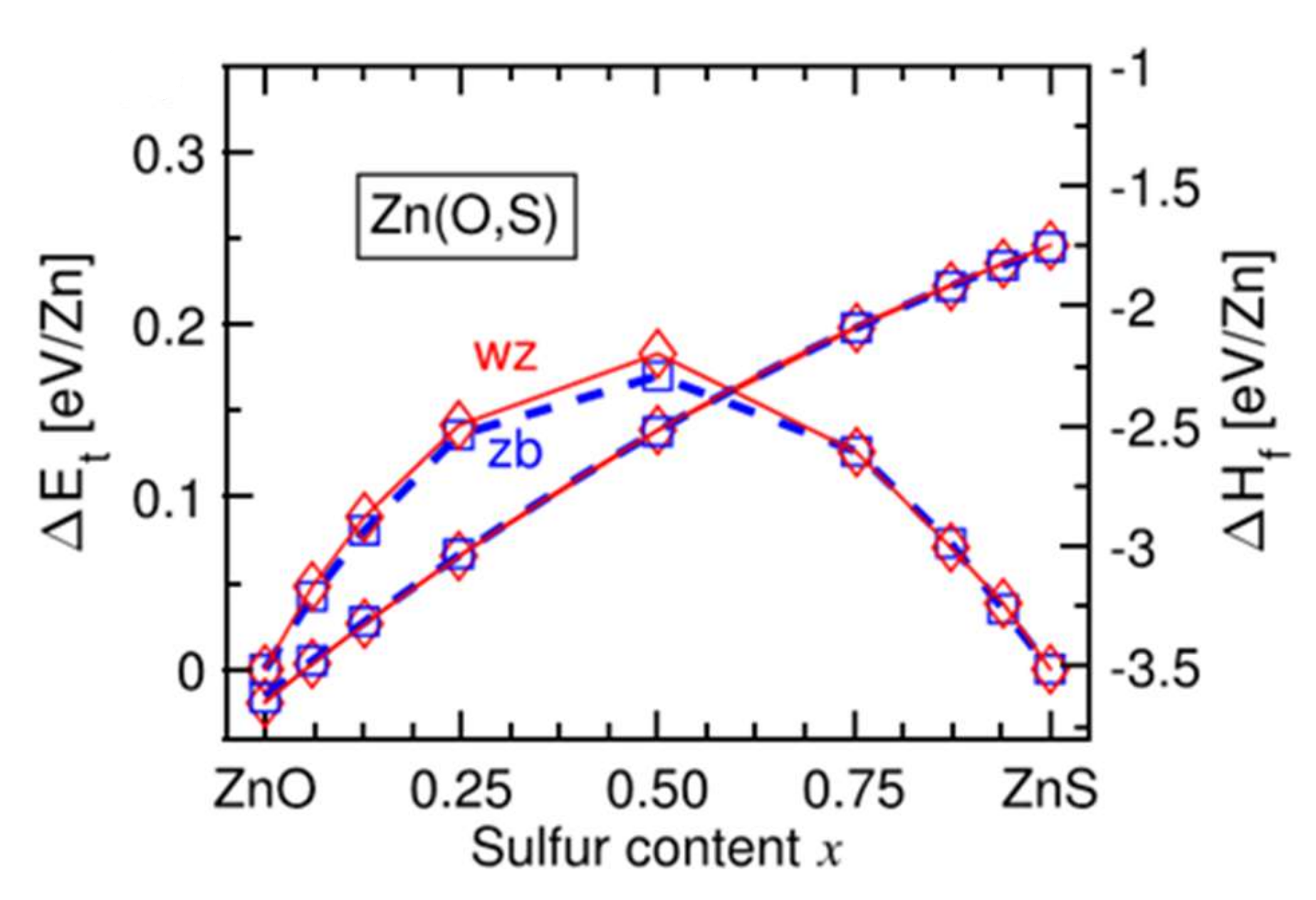


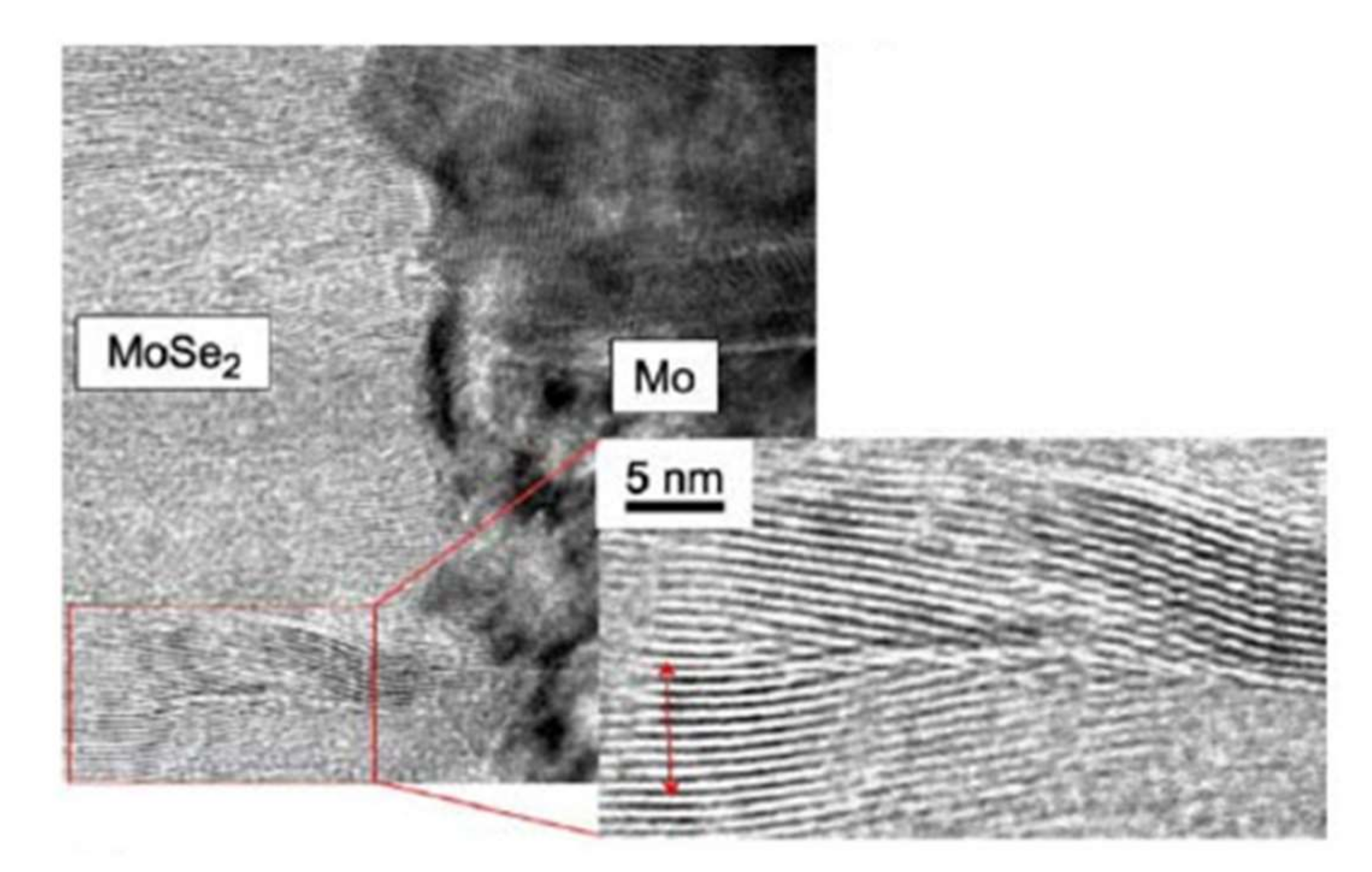
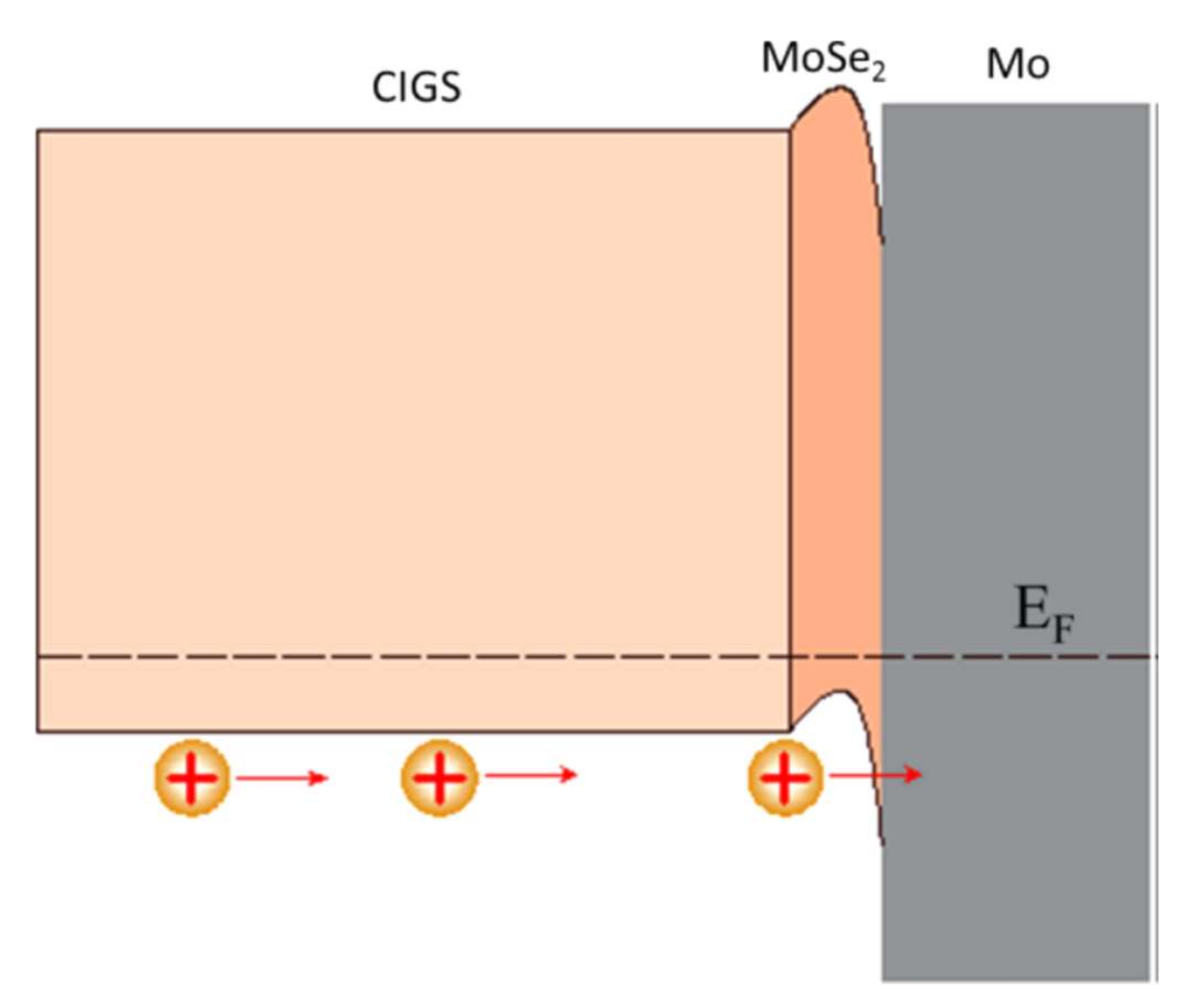
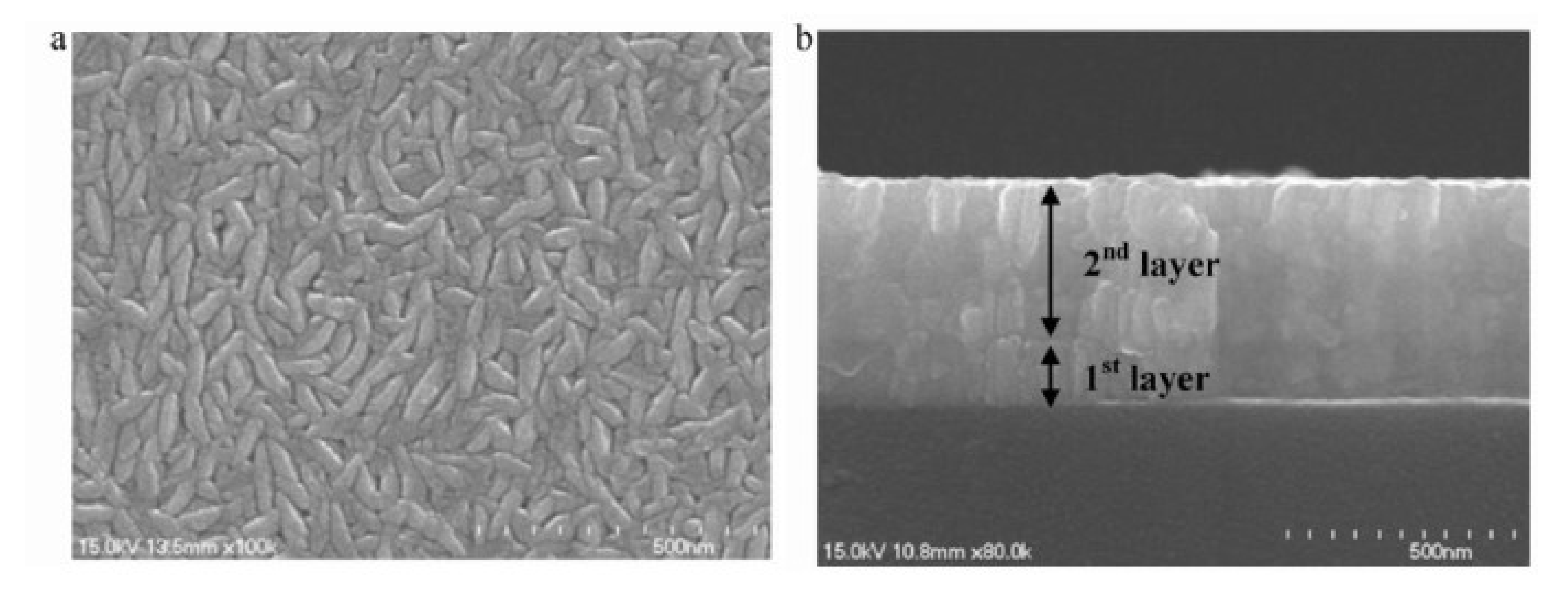
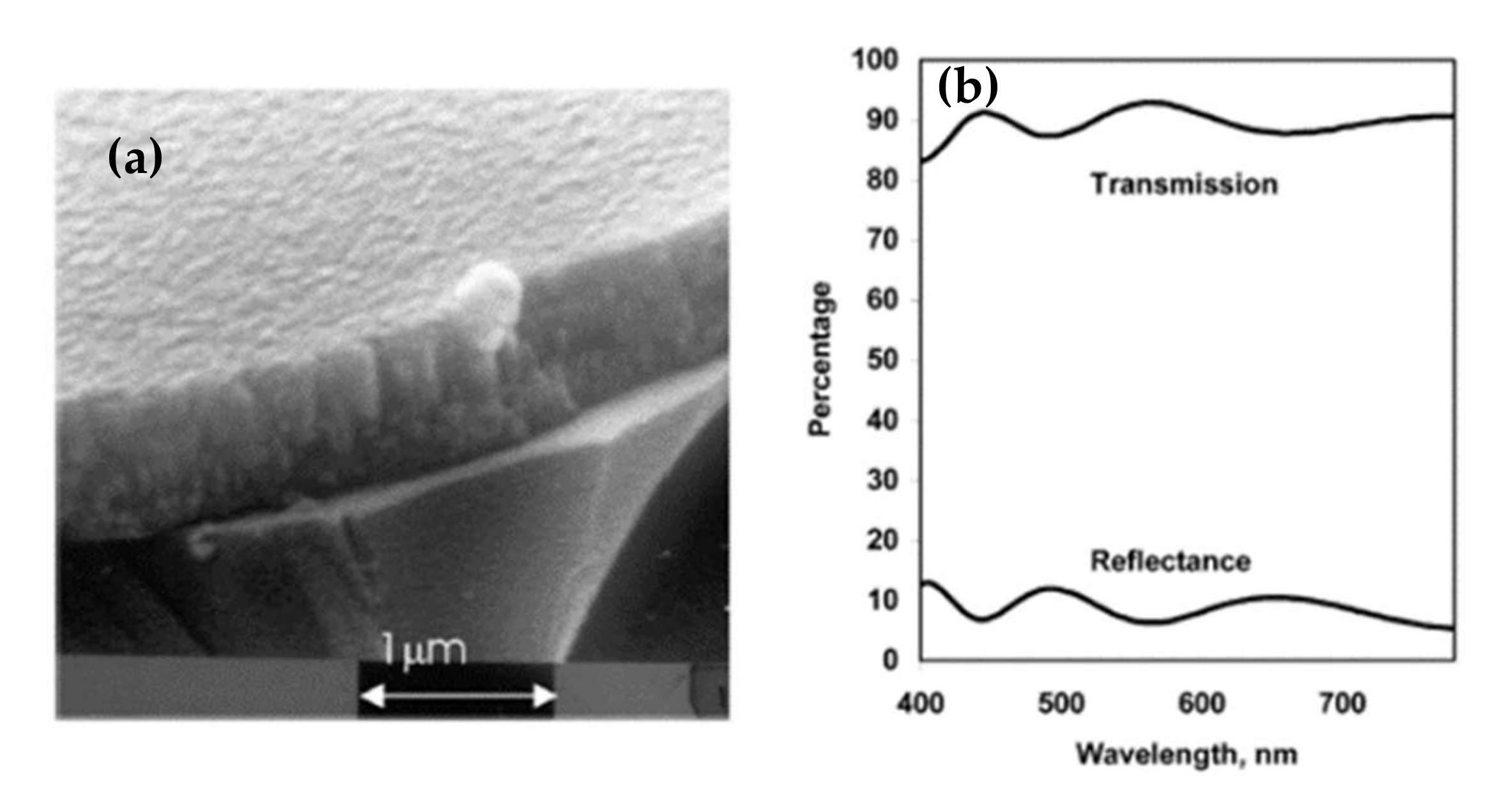

| Target | Pressure (Pa) | Power Density (W·cm2) | Crystalline Properties | Optical Properties | Ref | ||
|---|---|---|---|---|---|---|---|
| Gas | Crystalline Quality | D (nm) | Transmission (%) | Eg (eV) | |||
| ZnO | 0.25  6 6 | 0.38  1.27 1.27 |  with Pw with Pw | 18 < D< 46 | T > 90% with Ppa with Ppa with Pw with Pw | - | [36] |
| Ar | |||||||
| ZnS | 0.1  1.2 1.2 | 120 W |  with Ppa with Ppa maximum at 0.5 Pa | D < 17 | T ≈ 70% maximum at 0.7 Pa |  with Ppa with Ppa | [37] |
| Ar | |||||||
| ZnS | 0.1  1.5 1.5 | 5  20 20 |  with Ppa with Ppa with Pw with Pw |  with pw with pw19 < D < 20 | T = 80% |  with Ppa with Ppa | [38] |
| Ar | |||||||
| ZnS | 1.33 | 4.25  5.75 5.75 | Max. at 4.6 W/cm2 | 35 < D < 70 | T = 80% | Eg = 3.3 eV | [39] |
| Ar | |||||||
| Technic | Experimental Parameters | Substrate | Chemical Composition | Crystalline Properties | Morphology | Optical Properties | Ref. | |
|---|---|---|---|---|---|---|---|---|
| Target | Material | T° | ||||||
| sputtering | 60 W; 0.13 Pa O2: 0  2% 2% | Glass | 164° | 0.048 < O/ (S + O) < 0.82 | Hexagonal structure of the mesh parameter with O | Granular surface Grains < 50 nm | - | [41] |
| ZnS | ||||||||
| sputtering | 1 W/cm2; 1.33 Pa; O2: 0  1% 1% | Glass | No | 0.2 < O/ (S + O) < 0.95 ZnO0.05S0.95  ZnO0.71S0.29 ZnO0.71S0.29 | Of the mesh parameter and the intensity of O no diffractyion at the strong % O | Granular surface cracking at high% O | - | [42] |
| ZnS | ||||||||
| sputtering | 2 W/cm2; 0.9 Pa; O2: 0  2.5% 2.5% | CIGS quartz | 200° | ZnS  ZnO ZnO | Hexagonal structure of the mesh parameter with O | - | T≈70% 2.6 < Eg < 3.6 eV b = 3 | [43] |
| ZnS | ||||||||
| sputtering | 300 W; Ar/O2: 1.1  4.6% 4.6% | saphir | 340° | ZnO  ZnO0.6S0.4 ZnO0.6S0.4 | Hexagonal structure of the mesh parameter with O | crystallites size: 60–70 nm | 2.6 < Eg < 3.6 eV b = 3 | [44] |
| ZnS | [45] | |||||||
| sputtering | 300 W | ZnS  ZnO ZnO | - | - | 2.7 < Eg < 3.2 eV b = 3.1 | [35] | ||
| ZnS | ||||||||
| Co-pulverisation | PZns = 45 W; PZnO: 0  120 W 120 W | Si quartz | 200° | 0 < O/ (S + O) < 0.88 | Hexagonal structure of the mesh parameter with O | Grains; crystallites < 120 nm | T≈80 2.7 < Eg < 3.1 eV | [46] |
| ZnS and ZnO | ||||||||
| Co-pulverisation | 0.07 Pa; PznS = 45 w; PZnO: 20  120 W 120 W | 0.03 < S/ Zn < 0.90 | ||||||
| ZnS and ZnO | ||||||||
| Experimental Parameters | Thickness | Crystalline Properties | Morphology | Electrical Properties | Ref. |
|---|---|---|---|---|---|
| 0.026 to 0.66 Pa 200 to 300 W | 300 μm | (110) Crystalline quality decrease with Ppa | - | 0.4 to 6 Ω/sq 120 to 1800 × 10−6 Ω·cm Increase with Pw and Ppa | [72] |
| 0.33 to 2.66 Pa | - | (110) Crystalline quality decrease with Ppa | Columnar | Increase with Ppa | [74] |
| 0.26 to 2.6 Pa | - | - | Surface grains increment of intergrain space with Ppa | Increase with Ppa 13 to 40 × 10−6 Ω·cm | [73] |
| 0.026 to 2.6 Pa | 500 nm | (110) Crystalline quality decrease with Ppa | Columnar structure surface grains Density decrease with Ppa | 10.8 to 250 × 10−6 Ω·cm | [75] |
| 0.3 to 2 Pa | 0.3 to 2 μm | - | Surface grains increment of intergrain space with Ppa made of MoO3 | 0.5 Ω/sq | [76] |
| Experimental Parameters | Electrical Properties | Optical Properties | Ref. |
|---|---|---|---|
| 0.6 Pa, 1 W/cm2, 30 kHz, 280 °C, O2 = 15% | ρ = 3.4 × 10−4 Ω·cm | T = 80% | [87] |
| 70 kHz, 230 °C, 0.13 to 2 Pa | ρ = 2.2 × 10−3 Ω·cm for 0.4 Pa | T = 80% Eg = 3.6 eV | [88] |
| 30 kHz, RT, 1 to 5.3 Pa | ρ = 1.2 × 10−4 Ω·cm for 2.7 Pa | T = 84% | [89] |
| 4.5 W/cm2, 20 kHz, RT H2: 0 to 20 sccm | ρ = 4.10 × 10−4 Ω·cm for 14 sccm | T = 85% | [90] |
| Solar Cell Technologies | Cell Conversion Efficiency | Module Conversion Efficiency | |
|---|---|---|---|
| Crystalline | Monocrystalline silicon | 27.6% | 24.4% |
| Microcrystalline Si | 23.3% | 20.4% | |
| Multi-junction gallium arsenide (GaAs) | 47.1% | 38.9% | |
| Thin film | Cadmium telluride (CdTe) | 22.1% | 19% |
| CIGS | 23.4% | 19.2% | |
| Emerging | Perovskite | 25.5% | 17.9% |
| Organic | 18.2% | 11.7% | |
Publisher’s Note: MDPI stays neutral with regard to jurisdictional claims in published maps and institutional affiliations. |
© 2022 by the author. Licensee MDPI, Basel, Switzerland. This article is an open access article distributed under the terms and conditions of the Creative Commons Attribution (CC BY) license (https://creativecommons.org/licenses/by/4.0/).
Share and Cite
Salhi, B. The Photovoltaic Cell Based on CIGS: Principles and Technologies. Materials 2022, 15, 1908. https://doi.org/10.3390/ma15051908
Salhi B. The Photovoltaic Cell Based on CIGS: Principles and Technologies. Materials. 2022; 15(5):1908. https://doi.org/10.3390/ma15051908
Chicago/Turabian StyleSalhi, Billel. 2022. "The Photovoltaic Cell Based on CIGS: Principles and Technologies" Materials 15, no. 5: 1908. https://doi.org/10.3390/ma15051908






